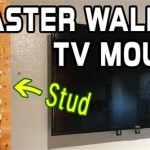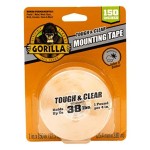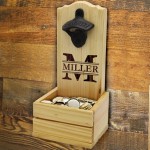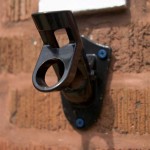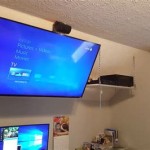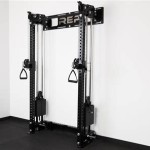Heavy Duty Flag Pole Wall Mount: A Comprehensive Guide
A flag, symbolizing national pride, organizational affiliation, or personal values, often serves as a prominent visual statement. To effectively display a flag, a sturdy and reliable mounting system is essential. While ground-mounted flagpoles offer a traditional solution, space constraints or aesthetic preferences may necessitate a wall-mounted approach. This article will delve into the characteristics, selection criteria, installation considerations, and maintenance aspects of heavy-duty flag pole wall mounts, providing a thorough understanding of this important hardware component.
Heavy-duty flag pole wall mounts are designed to securely affix a flagpole to a vertical surface, such as a building facade, wall, or post. These mounts are engineered to withstand significant wind loads and environmental stressors, ensuring the flag remains properly displayed even under adverse conditions. The term "heavy-duty" implies a robust construction using durable materials and featuring a design optimized for strength and stability.
The market offers a diverse range of flag pole wall mounts, varying in size, design, material, and load-bearing capacity. Understanding the specific requirements of the flag and the environment is crucial for selecting the appropriate mount. Choosing an inadequate mount can lead to structural failure, resulting in damage to the flag, the flagpole, and potentially the surrounding property.
Key Considerations for Selecting a Heavy Duty Flag Pole Wall Mount
Selecting the right heavy-duty flag pole wall mount involves careful evaluation of several critical factors. The following points should be considered before making a purchase:
1. Material and Construction: The material used in the construction of the flag pole wall mount significantly impacts its strength, durability, and resistance to corrosion. Common materials include steel, aluminum, and stainless steel. Steel mounts, particularly those with a powder-coated finish, offer excellent strength and are suitable for environments with moderate weather conditions. Aluminum mounts are lightweight and corrosion-resistant, making them ideal for coastal areas or locations with high humidity. Stainless steel mounts provide the highest level of corrosion resistance and are recommended for harsh environments or applications requiring long-term reliability.
The construction method also plays a crucial role. Welded joints should be strong and free from defects. The thickness of the metal used should be adequate to withstand the anticipated wind loads. Look for mounts with reinforced stress points and robust mounting hardware.
2. Flagpole Diameter and Height Compatibility: Flagpole wall mounts are designed to accommodate specific flagpole diameters and heights. Exceeding the specified limits can compromise the mount's structural integrity and lead to failure. Measure the diameter of the flagpole at the point where it will be inserted into the mount. Ensure that the mount is compatible with this diameter. Furthermore, consider the overall height of the flagpole and the projected wind load. Taller flagpoles exert greater leverage on the mount, requiring a more robust design.
Manufacturers typically provide specifications for the maximum flagpole height and diameter that the mount can safely support. Refer to these specifications carefully and select a mount that exceeds the requirements to provide a safety margin.
3. Wind Load Capacity: Wind load is a critical factor to consider, especially in areas prone to high winds or storms. The wind load capacity of a flag pole wall mount is the maximum wind speed that the mount can withstand without failing. This capacity is typically expressed in miles per hour (mph). Factors such as the size and weight of the flag, the height of the flagpole, and the local wind conditions all contribute to the overall wind load on the mount.
Consult local building codes and weather data to determine the anticipated wind speeds in the area. Select a mount with a wind load capacity that exceeds these speeds. Consider adding a safety factor to account for gusts and unexpected weather events. In areas with extreme wind conditions, it may be necessary to use multiple mounts or to reinforce the wall to which the mount is attached.
Installation Procedures for Heavy Duty Flag Pole Wall Mounts
Proper installation is paramount to ensure the safe and effective operation of a heavy-duty flag pole wall mount. Following the manufacturer's instructions and adhering to best practices are essential. The following steps outline a general installation procedure:
1. Site Selection and Preparation: Choose a suitable location on the wall that is free from obstructions and provides adequate clearance for the flag to fly freely. Ensure that the wall is structurally sound and capable of supporting the weight of the flagpole and the flag, as well as the anticipated wind loads. Inspect the wall for any signs of damage or weakness. If necessary, reinforce the wall before installing the mount.
Mark the location of the mounting holes on the wall using the mount as a template. Use a level to ensure that the mount will be installed horizontally. Drill pilot holes at the marked locations. The size of the pilot holes should be appropriate for the type of fasteners being used.
2. Mounting Hardware and Installation: Select appropriate mounting hardware based on the type of wall material. For concrete or masonry walls, use expansion bolts or concrete anchors. For wood walls, use lag screws or through-bolts. Ensure that the fasteners are long enough to penetrate deep into the wall and provide a secure hold.
Insert the fasteners through the mounting holes in the mount and into the pilot holes in the wall. Tighten the fasteners securely using a wrench or socket. Avoid over-tightening, which can damage the wall or the fasteners. Verify that the mount is firmly attached to the wall and does not wobble or move.
3. Flagpole Insertion and Securing: Insert the flagpole into the mount. Ensure that the flagpole is properly seated in the mount and that it is securely held in place. Some mounts may have set screws or clamps that can be used to further secure the flagpole. Tighten these set screws or clamps according to the manufacturer's instructions.
Inspect the installed flagpole and mount for any signs of stress or strain. If necessary, make adjustments to ensure that the flagpole is properly balanced and that the mount is not overloaded.
Maintaining Heavy Duty Flag Pole Wall Mounts for Longevity
Regular maintenance is essential to prolong the lifespan of a heavy-duty flag pole wall mount and to ensure its continued reliability. The following maintenance tasks should be performed periodically:
1. Visual Inspection: Conduct regular visual inspections of the mount, the flagpole, and the flag. Look for signs of corrosion, damage, or wear. Check for loose fasteners or cracks in the mount. Inspect the flag for tears, fraying, or fading. Replace any damaged or worn parts as needed.
2. Cleaning and Lubrication: Clean the mount regularly to remove dirt, dust, and debris. Use a mild soap and water solution. Rinse thoroughly and allow to dry completely. Lubricate moving parts, such as hinges or swivels, with a silicone-based lubricant. This will help to prevent corrosion and ensure smooth operation.
3. Fastener Tightening: Periodically check the tightness of the mounting fasteners. Tighten any loose fasteners to prevent the mount from becoming unstable. Be careful not to over-tighten the fasteners, which can damage the wall or the fasteners.
4. Corrosion Prevention: Apply a protective coating to the mount to prevent corrosion. Use a rust-inhibiting paint or a corrosion-resistant spray. Pay particular attention to areas that are prone to moisture accumulation, such as joints and seams.
By following these maintenance guidelines, it is possible to significantly extend the lifespan of a heavy-duty flag pole wall mount and to ensure that it continues to provide reliable service for many years to come.
In conclusion, a heavy-duty flag pole wall mount represents a crucial investment for individuals and organizations seeking to display their flags effectively and safely. Careful consideration of material, flagpole compatibility, wind load capacity, proper installation, and regular maintenance will contribute to the long-term performance and value of the mount.

Cubilan Stainless Steel Heavy Duty Flag Pole Holder Wall Mount House And Estate Bracket B07dvjqgvc The Home

Liberty Wall Mount Flagpole Kit Heavy Duty Made In Usa

Heavy Duty Roof And Wall Poles Flag Outlet Residential Flagpole Manufacturer

Flag Pole Holder Accessories Heavy Duty With Wall White Mercadolivre

Grade American Flag Spinning Flagpole Kit Flags Unlimited

Heavy Duty Stainless Steel Flag Pole Holder Bracket J Jackcube Design

Heavy Duty Flag Pole Wall Mount Five Roots Rod Guide Banner Mercadolivre

Liberty Wall Mount Flagpole Kit Heavy Duty Made In Usa

Heavy Duty Stainless Steel Flag Pole Holder Angle Adjust Wall Mount Weatherproof

Cubilan Flag Pole Bracket Holder Polished 316 Marine Grade Stainless Steel Heavy Duty B08166x3yn The Home


